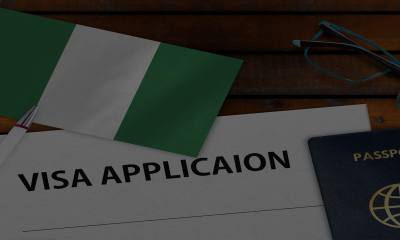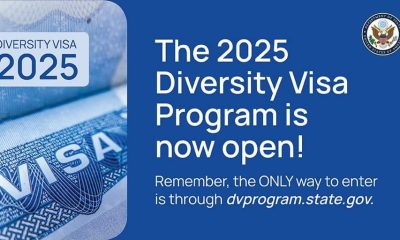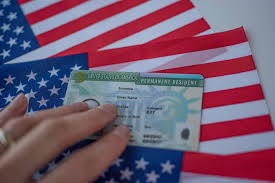Travel
7 Easiest and Safest Ways to Move to Australia
Australia has long been a dream destination for people looking to start a new life abroad. Known for its stunning landscapes, strong economy, and high quality of life, it’s no wonder that many aspire to move there. But how do you navigate the process of moving to Australia? Below are seven of the easiest and safest ways to make your Australian dream a reality.
7 Easiest and Safest Ways to Move to Australia
1. Skilled Migration (General Skilled Migration Program)
Australia is constantly looking for skilled workers to fill shortages in specific industries. If you have qualifications or work experience in an occupation that is in demand, you may qualify for a skilled migration visa, such as the Skilled Independent Visa (subclass 189), Skilled Nominated Visa (subclass 190), or Skilled Work Regional (Provisional) Visa (subclass 491).
Why It’s Easy:
- There is no requirement for employer sponsorship.
- If you meet the points-based criteria (which include age, education, and English proficiency), you can directly apply for permanent residency.
Safe Factor:
- The process is well-structured, and the Australian government provides clear guidelines to ensure a smooth transition.
2. Employer-Sponsored Visas
If you have a job offer from an Australian company, employer-sponsored visas are an excellent way to move to Australia. Employers in Australia can sponsor skilled workers under visas such as the Temporary Skill Shortage Visa (subclass 482) or the Employer Nomination Scheme (subclass 186).
Why It’s Easy:
- You already have a guaranteed job in Australia.
- Some pathways lead directly to permanent residency.
Safe Factor:
- The security of having a job in place makes the financial and logistical aspects of the move much easier.
3. Working Holiday Visa
Australia offers Working Holiday Visas (subclass 417) and Work and Holiday Visas (subclass 462) for young people (generally aged 18 to 30, or 35 for some countries). These visas allow you to live and work in Australia for up to a year, with the option to extend for another year if you meet certain conditions (such as working in regional areas).
Why It’s Easy:
- Minimal requirements: generally just proof of financial stability and health insurance.
- It allows you to experience life in Australia without committing to a long-term stay right away.
Safe Factor:
- The visa allows you to take on short-term work to fund your travels, offering flexibility while staying safe in terms of financial stability.
4. Student Visa
Australia is home to some of the best universities in the world, making it an attractive destination for international students. With a Student Visa (subclass 500), you can study full-time and work part-time (up to 48 hours per fortnight) to support yourself during your stay.
Why It’s Easy:
- No need for job experience or qualifications, just a letter of acceptance from an Australian educational institution.
- Many international students use this as a stepping stone to apply for permanent residency after graduation.
Safe Factor:
- You get the opportunity to acclimate to life in Australia while studying, and you can access post-study work visas after your course.
5. Partner Visa
If you’re in a relationship with an Australian citizen or permanent resident, you may be eligible for a Partner Visa (subclass 820/801 for onshore applicants or subclass 309/100 for offshore applicants). This visa allows you to live in Australia as a temporary resident while waiting for permanent residency approval.
Why It’s Easy:
- If you’re in a genuine, committed relationship, this is one of the most straightforward paths to residency.
- No points-based system to navigate.
Safe Factor:
- The visa allows you to live, work, and study in Australia while waiting for the permanent residency to be processed.
6. Business and Investment Visa
Australia encourages entrepreneurs and investors to bring their capital and ideas to the country through various business and investment visa options (subclass 188 and 888 for provisional and permanent visas). These visas are ideal for those looking to start a business or invest in an existing one.
Why It’s Easy:
- No need for specific job skills or qualifications, just proof of business experience or investment capital.
- There are options for high-net-worth individuals to gain permanent residency.
Safe Factor:
- Australia offers a robust business environment with strong government support for entrepreneurs and investors, providing stability and security.
7. Regional Migration (Regional Sponsored Migration Scheme)
Australia is eager to develop its regional areas and offers incentives for migrants willing to settle outside major cities like Sydney or Melbourne. Through the Regional Sponsored Migration Scheme (subclass 187) or the Skilled Work Regional (Provisional) Visa (subclass 491), you can obtain a visa to live and work in designated regional areas.
Why It’s Easy:
- Fewer applicants in regional areas, which may increase your chances of approval.
- Regional visas often have more lenient requirements and can lead to permanent residency.
Safe Factor:
- Regional areas offer a lower cost of living, friendly communities, and a relaxed lifestyle, making the move smoother and more secure for families or individuals seeking peace of mind.
What is the easiest visa to move to Australia?
The easiest visa to move to Australia depends on your individual circumstances, such as your nationality, age, education, and skills.
However, some visas are generally considered easier to obtain than others. Here are a few options:
- Working Holiday Visa: This visa is suitable for young people aged 18 to 30. It allows you to work and travel in Australia for up to 12 months.
- Student Visa: If you want to study in Australia, you’ll need a student visa. The requirements for this visa vary depending on the course you’re pursuing.
- Skilled Migration Visa: This visa is for skilled workers who have the qualifications and experience required to fill a specific job vacancy in Australia.
- Partner Visa: If you’re married or in a de facto relationship with an Australian citizen or permanent resident, you may be eligible for a partner visa.
It’s important to note that the visa application process can be complex, and it’s recommended to seek professional advice from an immigration agent or lawyer. They can help you determine the best visa option for you and guide you through the application process.
Here are some additional factors to consider when choosing a visa:
- Your nationality: Some nationalities have reciprocal visa arrangements with Australia, which may make it easier to obtain a visa.
- Your age: The age requirements for some visas vary.
- Your education and skills: If you have a high level of education or specialized skills, you may be eligible for certain visas.
- Your financial situation: You may need to demonstrate that you have sufficient funds to support yourself while in Australia.
Which state is the easiest to migrate in Australia?
There isn’t a single state in Australia that is universally considered the easiest to migrate to. The ease of migration can vary depending on several factors, including:
- Your nationality: Some nationalities have reciprocal visa arrangements with Australia, which may make it easier to obtain a visa.
- Your skills and qualifications: Certain states have a higher demand for specific skills, which may increase your chances of obtaining a visa.
- Your financial situation: You may need to demonstrate that you have sufficient funds to support yourself while in Australia.
- Your language proficiency: Proficiency in English is generally required for most visas.
However, some states are generally considered more welcoming to migrants due to their economic needs and population growth targets. These states often have active migration programs and offer various incentives to attract skilled workers.
Some states that are often mentioned as being more welcoming to migrants include:
- Western Australia: This state has a strong economy and is actively seeking skilled workers in various sectors.
- South Australia: This state offers a lower cost of living compared to other states and is also actively seeking skilled migrants.
- Northern Territory: This state has a growing economy and is particularly interested in attracting skilled workers in the mining and resources sectors.
It’s important to note that the migration landscape can change over time, and it’s always recommended to research the specific requirements and opportunities for the state you’re interested in.
Here are some additional tips for choosing a state to migrate to:
- Research the job market: Look for states with a strong demand for your skills.
- Consider your lifestyle preferences: Think about factors such as climate, cost of living, and cultural diversity.
- Network with people who have already migrated to Australia: They can provide valuable insights and advice.
Conclusion:
Moving to Australia is a dream for many, and with the right visa path, it can become a reality. Whether you’re a skilled professional, a student, or someone looking to join a loved one, Australia offers multiple safe and straightforward ways to migrate. Each route has its unique benefits, from the flexibility of a working holiday to the stability of employer sponsorship. Before applying, ensure that you meet the specific eligibility criteria and consult with an immigration expert if necessary to make your transition as smooth as possible.
Australia’s welcoming attitude toward migrants, coupled with its vibrant economy and multicultural society, makes it an attractive destination for anyone seeking new opportunities and a fresh start.










